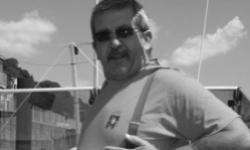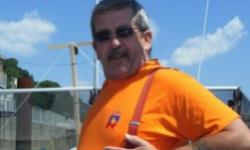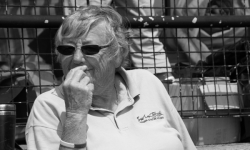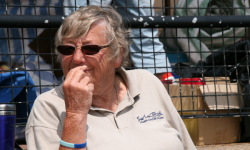01 Sep 2013Robert Fisher swims the Channel
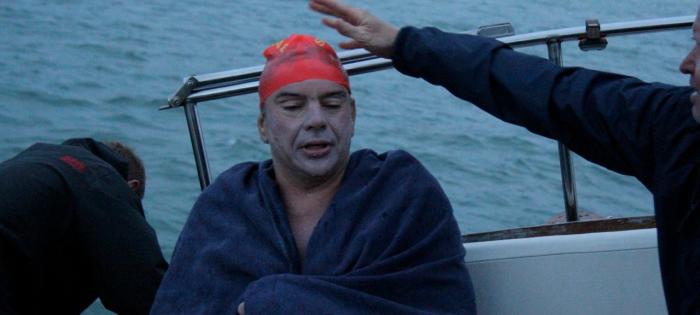
It took Robert Fish 14 hours 23 minutes to become a Channel Swimmer, and one of his crew members writes a fabulous account here.
I could see that he was putting on weight. Every morning he would stop by the fridge and knock back a pint of full fat milk before starting his rounds. By January, his lean, muscular frame lay beneath a discernible layer of blubber.
I had to ask. “You okay, Robert? You’re starting to look like a seal.” He chuckled as he wiped away his white moustache. “I have to protect my kidneys” he said, clearly wondering whether to say more. “The English Channel can get very cold. The kidneys are the most exposed. I need another five millimetres of fat for protection before I make my crossing”. The way he drained his glass said that he wasn’t joking. And on 1 September 2013, Dr Robert Fisher, Consultant Psychiatrist in City and Hackney, swam the English Channel.
Germans are famous for removing their clothes and doing outdoorsy things. “Ever since I was a child I was the first person into the cold lake” he said. Two decades later he found himself not in a freezing lake but a 30 mile stretch of wide open sea, crossed by two of the world’s busiest shipping lanes, a stretch of restless grey water crammed with supertankers, jellyfish, lost Somali pirates, curious dolphins, grumpy seals and the occasional shark.
After a year’s preparation, he had the right crew, the right tides, right route, wind and weather. He set off from Shakespeare beach before dawn, a bobbing boatload of psychiatrists chugging and cheering alongside him as his firm, buoyant body sliced stroke after stroke through the water. Pacing himself carefully, “otherwise you pay in the end”, he swam beneath a crimson sunrise. Strong cross currents carried him from Dover to Folkestone, but he held his stroke at a calm fifty five. On and on he went. Every 30 minutes or so the crew, in awe of his daring, lowered warm liquid food. He downed it in seconds, like milk, before surging on.
He had his darker moments. “I had a dip after six hours, but a friend swam with me for an hour.” At launch plus nine, a pod of porpoises took over escort duty then abruptly disappeared. The boat captain frowned. The weather was turning. Force five winds lifted the granite seas into a roiling foam. Robert pressed on against ten foot waves, not over them but through them. “I was buried a couple of times. It makes me a member of the force five club”.
By twelve hours, he was starting to tire. At thirteen hours, he hit Cap Gris Nez where the wind and waves joined forces with fierce head currents rounding the cape. Forcing down dark thoughts of defeat he pushed harder, straining every nerve and sinew for a final sprint that took him ahead of the boat. But Nature had more in store; thousands of jelly fish clogged and stung at his aching limbs “the last two hundred meters was like hitting jelly”. And then he felt it. French gravel. Half delirious with joy and exhaustion, he pulled himself up onto a Gallic rock and raised his leaden arms towards the beaten sea.
But the French take a dim view of Anglo-Saxon eccentricity. Within minutes, the good Doctor Fisher was hustled back into La Manche, a safety swimmer seeing him carefully back to the boat – those final metres are among the most treacherous.
Robert will tell you that he has changed since his adventure. More sensitive to the good and bad in the world around him, he thoughtfully admits. But also so much more in touch with the secret of what it means to be alive. And he no longer looks like a seal.
Dr Mark Salter
Consultant Psychiatrist
Sandettie Lightship Observations
2am, 4th December 2025
Water: 53.2 °F (11.8 °C)
Air: 45.7 °F (7.6 °C)
Wind Speed: 20.0 kn (37.0 km/h)
Wind Direction: SSE (160°)
The CS&PF President, Mike Ball and all the committee are deeply saddened by the passing of Ady Brown.… https://t.co/E17pLxZwgw
3 years ago






































